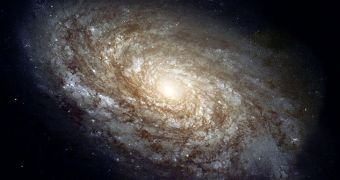Like every aspect of our civilization, the Sun, galaxies, and the Universe in general work on fuel. In the case of stars, this is represented by hydrogen and helium fuels. When a car, or a star, runs out of whatever is powering it, it stops, or turns into a black hole. A new series of calculations has revealed that the Universe too is running down on its constituents, and also that it has a level of entropy 30 times larger than anyone expected it to. These conclusions belong to a group of experts at the Australian National University (ANU), ScienceDaily reports.
Scientists usually calculate entropy in order to be able to determine the state of disorder in a system, or to discover the efficiency of an engine or similar construct. Physicists at the ANU Research School of Astronomy and Astrophysics, led by PhD student Chas Egan and Dr. Charley Lineweaver, performed their calculations taking into account factors such as the number and size of black holes in the Universe, and determined that the Cosmos was 30 times more run down than knowledge at the moment had it.
“We considered all contributions to the entropy of the observable Universe: stars, star light, the cosmic microwave background. We even made an estimate of the entropy of dark matter. But it's the entropy of super-massive black holes that dominates the entropy of the universe. When we used the new data on the number and size of super-massive black holes, we found that the entropy of the observable universe is about 30 times larger than previous calculations,” Egan explains.
“Contrary to common opinion, the maintenance of all the complicated structures we see around us – galaxies, stars, hurricanes and kangaroos – have the net effect of increasing the disorder and entropy of the Universe. But to be fair, their contributions are negligible compared to the entropy of super-massive black holes,” Dr. Lineweaver adds. Details of the work were accepted for publication, and will appear in an upcoming issue of the respected Astrophysical Journal.
The experts will now focus their investigation on determining precisely the rate at which entropy is produced all around us, as well as figuring out just how close we are to a maximum entropy. This may help astrophysicists determine precisely how much time we have left before everything we know and love dies in the ensuing heath death.
“The Universe started out in a low entropy state and, in accordance with the second law of thermodynamics, the entropy has been increasing ever since. This is important because the amount of energy available to life in the universe, including terrestrial life, depends on the entropy of the Universe. We'd like to know how much energy will be available to life forms anywhere in the Universe, and where this energy is. The first step in this procedure is to determine the entropy of the Universe. That is what we did,” Egan adds.

 14 DAY TRIAL //
14 DAY TRIAL //